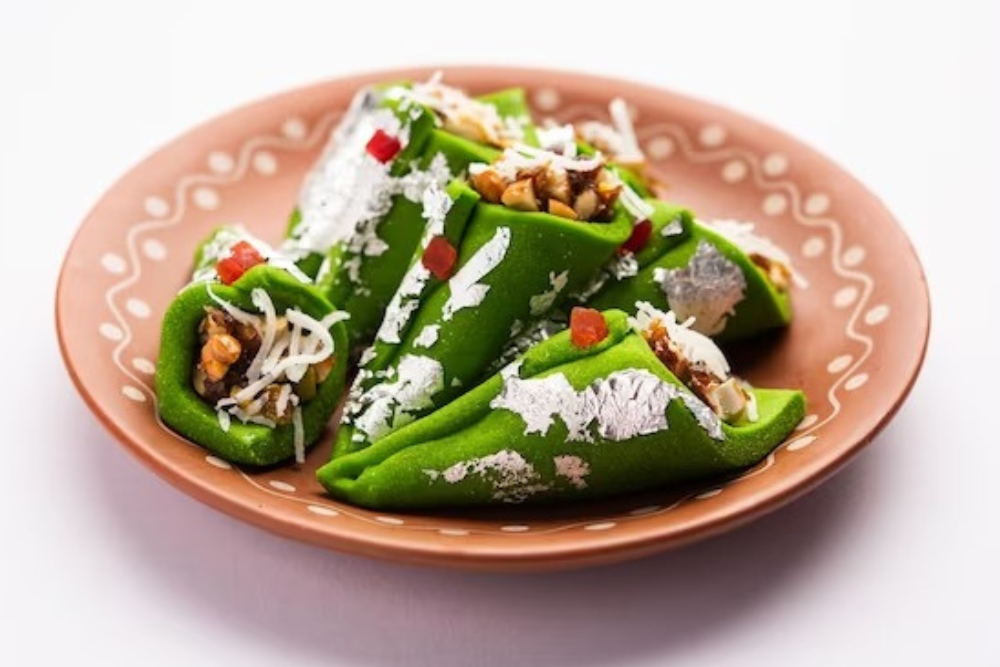In India, you’ll see many people wearing Dhoti Kurta in almost every corner and in small shops. They have red tongues, teeth and big smiles on their faces. Do you know who i’m talking about? If not? Then you’re not a true Indian. The person is nobody else but a Paan Wala. For many centuries, these Paan walas have given the Indian people a taste that no one can beat. For example, Gulkand Paan. Gulkand in paan is used for the best flavour and people are addicted to it. Gulkand Paan masala is used to make this. Paan is eaten by the Indian people after a meal for a good digestion and some people eat it for a taste they can’t forget. There are many Paan health benefits. Paan leaves are also known as Betel Leaves in english. Betel Leaves have many health benefits. Betel Leaves for weight loss, Betel Leaves for cholesterol, Betel Leaves for heart are used by many people. Paan leaves are also used in praying in temples. Some people use it as a medicine as it has many medicinal uses. Indian people have been addicted to its taste for many centuries.
Now, let’s find out the history of Paan. It is believed that Paan has originated in India since thousands of years. Shiv Ji and Maa Parvati had put the first seed of Paan in Himalaya. After that Paan leaves are believed to be the holy leaves and are used in ‘Pooja’ and ‘Hindu culture’. It has also been used in Ayurveda for thousands of years as it has many health benefits. First health benefit is that it helps in good digestion. Another one is that after eating Paan, it improves and clears the voice of humans, it doesn’t lead to bad breath and keeps the tongues healthy. This is the reason Indian Ayurveda has Paan. It has no side effects and is 100% natural. Paan was used by Hindus at one time but after that many other religions have accepted that and started using it in many ways. In the Mughal Period, Paan got many names and it is believed to be the most important thing. It is believed that adding ‘Chunna’, ‘Elaichi’, and ‘Laung’ in Paan was started by the Mughals.
Time has passed and people have started seeing Paan not only as a thing to eat but also used as many other things. In the Mughal Period, Noor Jahan had seen that after eating Paan, lips turned red. Then he introduced Paan as a makeup product which was used by Mughal period womens to make their lips soft and red. Paan was coming in many varieties like chocolate paan, meetha paan, lucknowi Paan, fire paan, gulkand paan, fruit paan, etc.
Paan got its name from a Sanskrit word ‘Parna’ which means leaf. Nowadays, Paan is served with many ingredients and is rolled in a triangular shape which is eaten by people. Paan also comes in many varieties. They are now used as a flavour in many things like ice creams, soaps, cakes, etc. Paan leaves have many health benefits like they are full of vitamin C, thiamine, niacin, riboflavin, carotene, and are a great source of calcium.
Paan is eaten by Indian people after a meal as it helps in digestion, doesn’t lead to constipation and other gastric pain. It has been written in Ayurveda, that chewing paan after a meal increases the secretion of digestive juices, and destroys the intestinal parasites which helps in good digestion.

